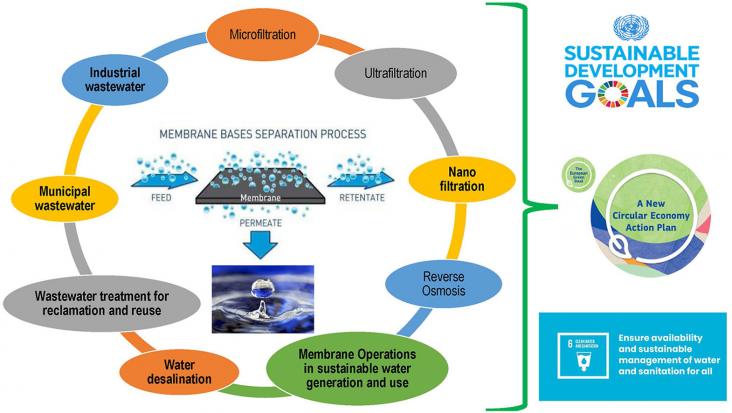
Journal of Water Process Engineering, Volume 50, December 2022
The Lancet, Volume 400, 5 November 2022
The Lancet Planetary Health, Volume 6, November 2022
The Lancet, Volume 400, 29 October 2022
The Lancet Global Health, Volume 10, September 2022, e1326-e1335
Journal of Water Process Engineering, Volume 48, August 2022
The Lancet, Volume 400, 2 July 2022, Pages 48-59
The Lancet Infectious Diseases, Volume 22, June 2022, P845-856
The Lancet Global Health, Volume 10, June 2022
The Lancet Global Health, Volume 10, June 2022
Background: An alarming number of public health-care facilities in low-income and middle-income countries lack basic water, sanitation, hygiene (WASH), and waste management services. This study estimates the costs of achieving full coverage of basic WASH and waste services in existing public health facilities in the 46 UN designated least-developed countries (LDCs). Methods: In this modelling study, in-need facilities were quantified by combining published counts of public facilities with estimated basic WASH and waste service coverage.
The Lancet Infectious Diseases, Volume 22, June 2022
The Lancet Planetary Health, Volume 6, April 2022
The Lancet Planetary Health, Volume 6, April 2022, e359-e370
One Earth, Volume 5, 18 February 2022
Desalination, Volume 522, 15 January 2022
Preventive Medicine Reports, Volume 20, 2020, 101209, ISSN 2211-3355
Sustainable Chemistry and Pharmacy, Volume 25, 2022, 100590
Engineering Applications of Artificial Intelligence, Volume 117, Part A, 2023, 105617
One Earth, Volume 5, Issue 10, 2022, Pages 1080-1084
The Lancet Regional Health - Western Pacific, Volume 31, 2023, 100597
Marine Pollution Bulletin, Volume 181, August 2022
Marine Pollution Bulletin, Volume 181, August 2022
Amita Nakarmi, Sushil Kanel, Mallikarjuna N. Nadagouda, Tito Viswanathan,
Chapter 7 - Applications of conventional and advanced technologies for phosphorus remediation from contaminated water,
Editor(s): Uma Shanker, Chaudhery Mustansar Hussain, Manviri Rani,
In Micro and Nano Technologies,
Green Functionalized Nanomaterials for Environmental Applications,
Elsevier,
2022,
Pages 181-213,
ISBN 9780128231371
Sai Karthik Cheemalamarry, Vinayak Sharma, Yaddanapudi Varun, I. Sreedhar, Satyapaul A. Singh,
10 - Recent advances of nanotechnology in water remediation,
Editor(s): Noel Jacob Kaleekkal, Prasanna Kumar S. Mural, Saravanamuthu Vigneswaran,
In Micro and Nano Technologies,
Nano-Enabled Technologies for Water Remediation,
Elsevier,
2022,
Pages 311-333,
ISBN 9780323854450
Julia Derx, Rita Linke, Domenico Savio, Monica Emelko, Philip Schmidt, Jack Schijven, Liping Pang, Regina Sommer, Margaret Stevenson, Harold van den Berg, Saskia Rutjes, Andreas H. Farnleitner, Alfred Paul Blaschke, From Groundwater to Drinking Water – Current Approaches for Microbial Monitoring and Risk Assessment in Porous Aquifers, Encyclopedia of Inland Waters (Second Edition), Elsevier, 2022, Pages 580-594, ISBN 9780128220412
Marc Rosen, Aida Farsi, CHAPTER ONE - Introduction to desalination and sustainable energy, Editor(s): Marc Rosen, Aida Farsi, Sustainable Energy Technologies for Seawater Desalination, Academic Press, 2022, Pages 1-44, ISBN 9780323998727
Mohammad Mehdi Golbini Mofrad, Iman Parseh, Mokhtar Mahdavi,
Chapter 11 - Hazardous and industrial wastewaters: from cutting-edge treatment strategies or layouts to micropollutant removal,
Editors: Abdul Mohammad and Wei Ang,
Integrated and Hybrid Process Technology for Water and Wastewater Treatment,
Elsevier,
2021,
Pages 233-251,
ISBN 9780128230312
Wajid Umar, Muhammad Zia ur Rehman, Muhammad Umair, Muhammad Ashar Ayub, Asif Naeem, Muhammad Rizwan, Husnain Zia, Rama Rao Karri,
Chapter 10 - Use of nanotechnology for wastewater treatment: potential applications, advantages, and limitations,
Editor(s): Janardhan Reddy Koduru, Rama Rao Karri, Nabisab Mujawar Mubarak, Erick R. Bandala,
In Micro and Nano Technologies,
Sustainable Nanotechnology for Environmental Remediation,
Elsevier,
2022,
Pages 223-272,
ISBN 9780128245477,
https://doi.org/10.1016/B978-0-12-824547-7.00002-3
Felix A. Diawuo, Roland Teye Amanor, Chapter 2 - Need for pumped hydro energy storage systems, Editor(s): Amos T. Kabo-Bah, Felix A. Diawuo, Eric O. Antwi, Pumped Hydro Energy Storage for Hybrid Systems, Academic Press, 2023, Pages 23-41, ISBN 9780128188538
COVID-19 and the Sustainable Development Goals, Volume , 1 January 2022
J. Indu, Akhilesh S. Nair, Ankita Pradhan, Rohit Mangla, Sooraj Krishnan, Kaushlendra Verma, Vinayak Huggannavar; Radar Remote Sensing, 2022, Pages 123-148
Gregory Lazarev, Chapter 8 - Pastoralism as a response to climate change and water security in Mediterranean mountains and forests, Editor(s): Nadia El-Hage Scialabba, Managing Healthy Livestock Production and Consumption, Academic Press, 2022, Pages 123-127,
Priya Kanwar, Kanwar P. Singh. Chapter 4 - Impact of climate change on water resources,
Editor(s): Ashwani Kumar Tiwari, Amit Kumar, Abhay Kumar Singh, T.N. Singh, Enrico Suozzi, Gagan Matta, Stefano Lo Russo,
Current Directions in Water Scarcity Research,
Elsevier,
Volume 5,
2022,
Pages 45-57
Aaditya Chaturvedi, Bhanu Pandey, Aneet Kumar Yadav, Shubham Saroj,
Chapter 5 - An overview of the potential impacts of global climate change on water resources,
Editor(s): Binota Thokchom, Pengpeng Qiu, Pardeep Singh, Parameswar K. Iyer,
Water Conservation in the Era of Global Climate Change,
Elsevier,
2021,
Pages 99-120,
ISBN 9780128202005
The Lancet, Volume 400, 29 October 2022
The Lancet Planetary Health, Volume 6, April 2022, e359-e370

